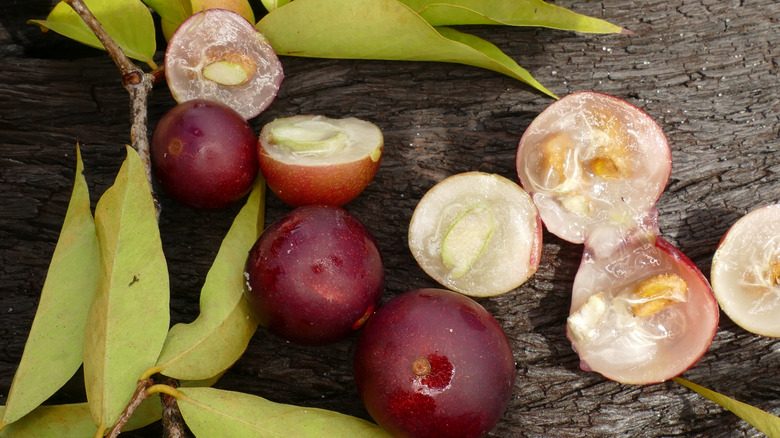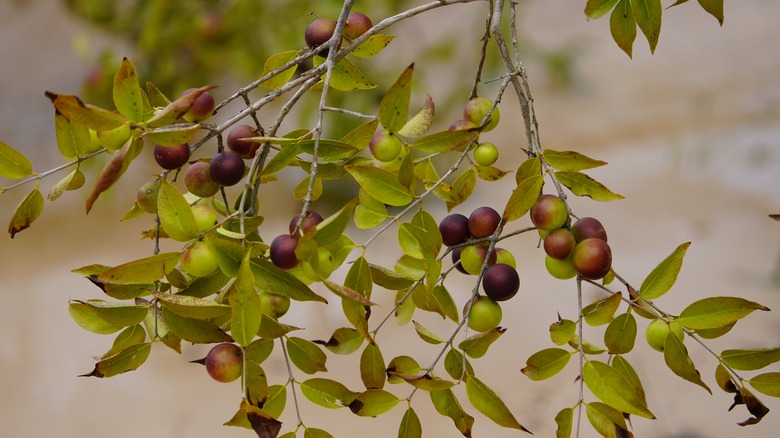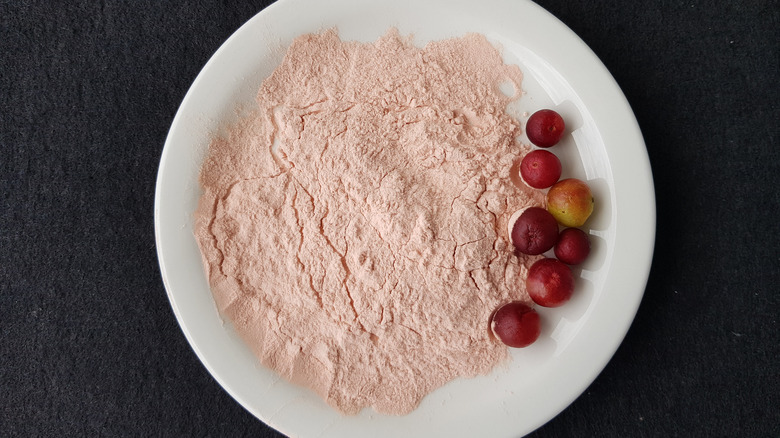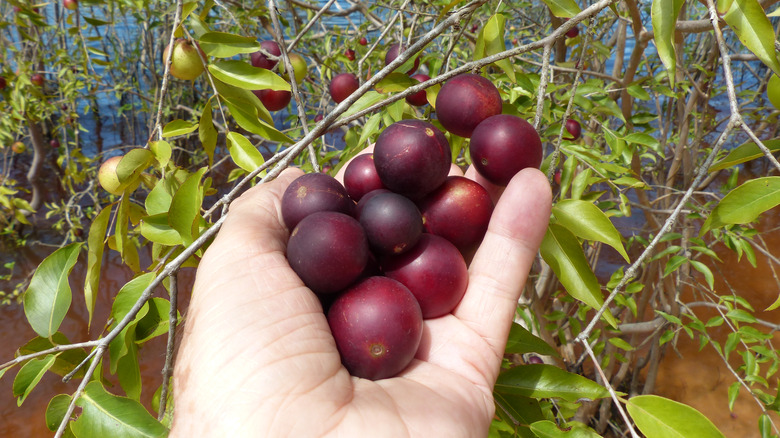Camu Camu: The South American Berry You Should Know About
Home to 10% of the world's biodiversity, the Amazon contains a dazzling variety of plants, animals, and undiscovered species, reports the World Wide Fund For Nature. With research indicating that up to 20% of global flora can be ingested, scientists estimate there are anywhere from 1,600 to 3,200 edible plant species growing in the Amazon. Though some are seldom consumed outside the region, others are farmed for worldwide export, like the super fruit açai and ripe passion fruit.
The next time you're looking for another vitamin-rich dash of Amazonian flavor, consider adding camu camu to your shopping list. The small dark red and purple berries contain more than 100 times the vitamin C content of an orange (via Trade Winds Fruit). The sour fruit is increasingly touted as a superfood and has found its way into juice bars and health shops. Sold in powdered form, the ingredient is believed to boost the immune system and elevate mood (per Marque Medical). Though more research needs to be conducted to uncover its full effects, this tangy berry is undoubtedly worth a try.
What is camu camu?
A hardy shrub, camu camu grows near bodies of water such as river banks, lakes, and swamps; the plant needs excessive hydration to grow, thriving when completely submerged for four to five months during seasonal floods. Endemic to the Amazon rainforest in Brazil, Guyana, Ecuador, Peru, Venezuela, and Bolivia, the plant is highly adaptable, and farming has spread to coastal and highland regions outside of the jungle, per Science Direct.
Part of the Myrtaceae family, Biology Discussion identifies the shrub as a botanical cousin of other tropical trees like protein-packed guava fruit, eucalyptus, and clove. The edible berries grow no more than 20 grams in weight. Half of a camu camu berry is flesh, while the rest of the berry is made up of anywhere from one to four seeds. In its endemic regions, people refer to the fruit by various names: guayabo in Colombia and caçari in Brazil, according to Science Direct. Now, let's dive into how camu camu is consumed.
What does camu camu taste like?
With an abundance of citric and ascorbic acid, camu camu is incredibly sour. The flavor echoes citrus and tart cherries, with a subtle fruit undertone. As a result of its strong taste, it's rarely consumed raw and instead worked into varying recipes. Most commonly, it's combined with sugar and mixed into smoothies and juices (per Amayu).
For preservation, the berry is commonly ground into powder or frozen. The fresh fruit must be consumed within a week when refrigerated, but the powder remains edible for a year. Some simply swallow camu camu in capsule form for health benefits, but the powder can also be mixed into protein shakes, kneaded into doughs, or sprinkled into easy summer marinades for an acidic kick (via Specialty Produce).
Since camu camu is predominantly consumed for its high vitamin C content, keep temperatures low and cooking time short, or the vitamin loses its potency, instructs Harvard. In addition, vitamin C is water-soluble, so beverage applications work best. A great addendum to the pantry, the powder is easily stored, and a spoon or two can add a bright zing to recipes.
Nutritional content of camu camu
Camu camu is touted for a variety of health benefits, including the ability to fight colds, provide boosts of energy, and improve skin conditions. While the exact integrity of these effects is unknown, WebMD confirms the berry packs a nutritious punch, particularly a notable dose of vitamin C.
This vital vitamin, which can only be ingested from food, doubles as an antioxidant and is essential for the formation of blood vessels, muscles, collagen, and healing processes (per Mayo Clinic). A staggering 2-3% of camu camu's weight is vitamin C. In addition, research has shown that the fruit possesses the most antioxidants out of all Brazilian fruits.
Since only a teaspoon delivers 760% of daily vitamin C requirements, consider it best to refrain from excessive consumption. Healthline warns that too much of the tart berry can lead to an upset stomach and digestive issues, yet one spoonful can help meet daily nutritional needs.



